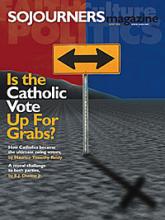April marked the 100th anniversary of the birth of pentecostalism in a poor black neighborhood in East Los Angeles. Many pentecostals and charismatic Christians trace their spiritual heritage to this Azusa Street revival—when the Holy Spirit was made manifest through ecstatic worship, getting happy, healings, the “suspension in holy silence,” and particularly speaking in tongues. Today, there are more than 600 million pentecostals worldwide. In the United States, pentecostals constitute almost 3 percent of the population, and the numbers are rising.
Historically, Spirit-led religious movements have often sprung up among the marginalized and displaced. For example, a turn-of-the-century Welsh revival flourished in the era following rebellions against British road tolls and enclosure laws. The sanctified tent-meetings in Texas gained force after the awful hurricane that decimated Galveston in 1900. The African-American leadership in the holiness movement was forged in the fire of slavery. Lucy Fallow, a leader of the Texas revivals and later at the Azusa Street Mission, was the niece of Frederick Douglass and one of the first pentecostal missionaries to reach Africa.
The Holy Spirit uprising on Azusa Street was forged in a similar crucible. Chinese workers were rioting over an American trade expansion that weakened the Chinese dynasty and were boycotting American goods in reaction to the Chinese Exclusion Act. Filipino workers in California were siding with their compatriots in the Philippines who were attempting to overthrow American rule. African Americans were filling Los Angeles to escape the lynchings and other violence of the Jim Crow South. And the first major California water war was heating up.
Read the Full Article
